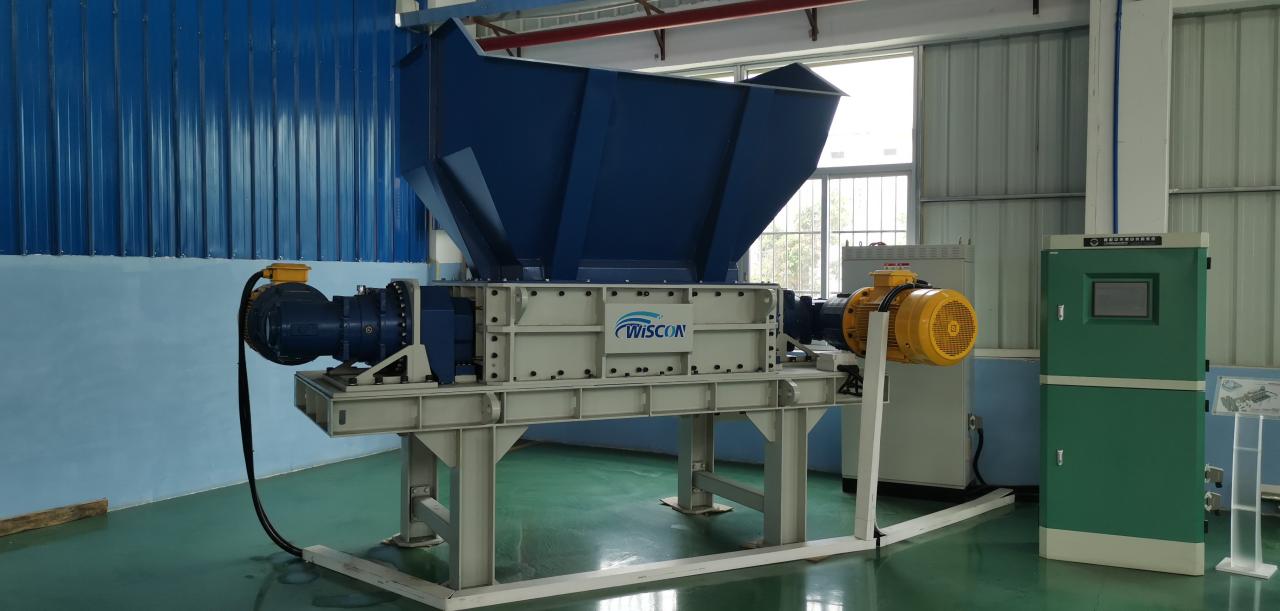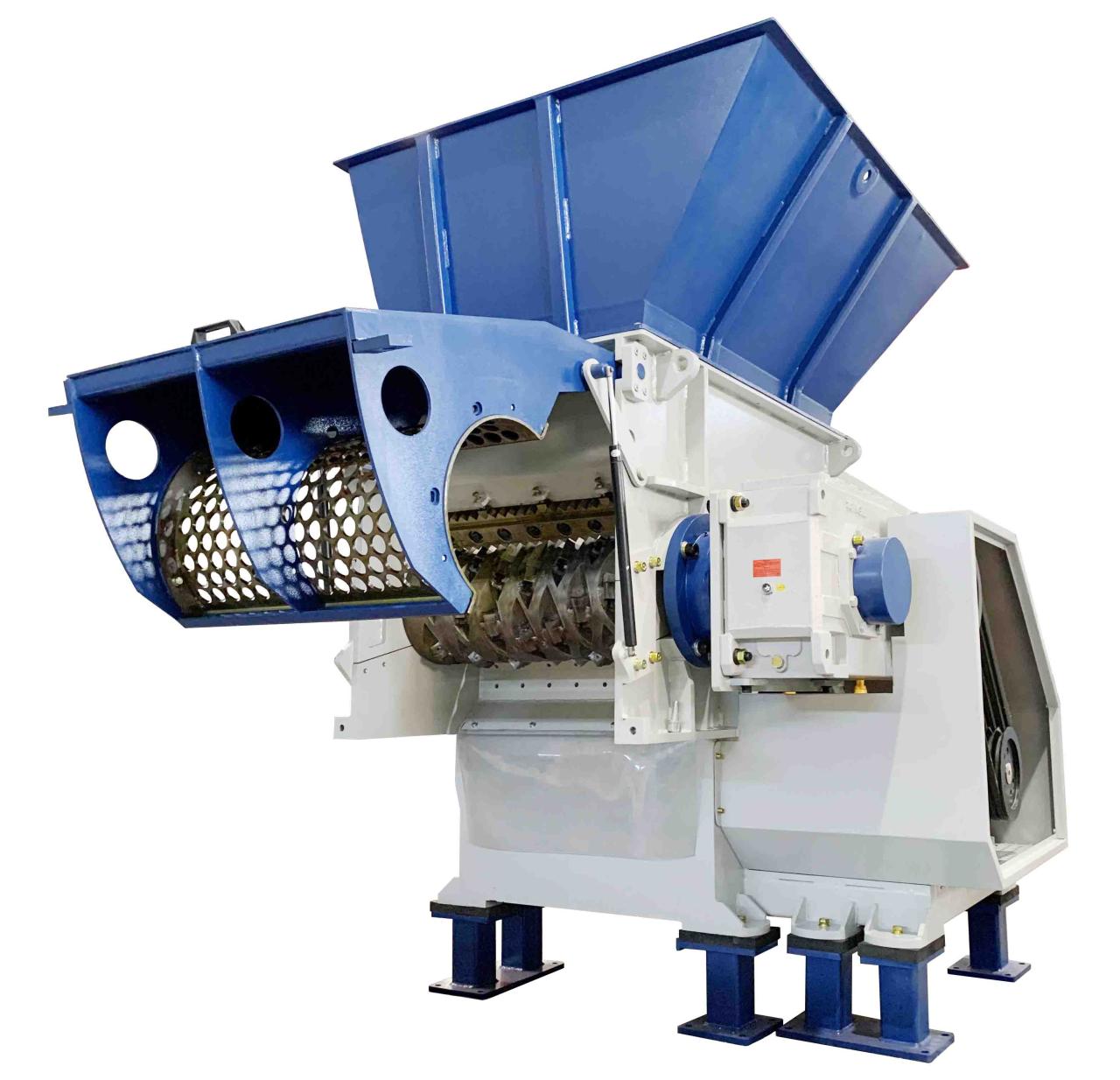Shredder Technology: Securing Information and the Environment
Shredder technology has come a long way since its humble beginnings, evolving from simple paper cutters to sophisticated machines capable of destroying sensitive information and managing waste responsibly. From the […]

Shredder technology has come a long way since its humble beginnings, evolving from simple paper cutters to sophisticated machines capable of destroying sensitive information and managing waste responsibly. From the compact paper shredders found in offices to the massive industrial shredders used in manufacturing, these devices play a crucial role in safeguarding data, protecting privacy, and promoting sustainability.
This exploration delves into the history, types, mechanisms, security levels, applications, safety considerations, and advancements in shredder technology. We’ll uncover the intricate workings of these machines, explore their diverse applications across various industries, and discuss the evolving landscape of shredding practices.
Shredder Safety and Maintenance: Shredder Technology
Shredders are powerful machines that can be extremely useful for document destruction and waste reduction. However, they also pose potential hazards if not operated and maintained properly. It is crucial to understand the safety precautions and best practices for using and maintaining shredders to ensure a safe and efficient work environment.
Potential Hazards Associated with Shredder Use
Shredders can pose several hazards, including:
- Injuries from the shredding mechanism: Fingers, hands, and other body parts can be injured if they come into contact with the rotating blades. This can result in severe lacerations, amputations, or even death.
- Fire hazards: Overheating or improper disposal of shredded materials can lead to fires. The friction created during the shredding process can generate heat, and certain materials like paper and plastics can be flammable.
- Electrical hazards: Shredders are powered by electricity, and faulty wiring or improper use can result in electric shocks or electrocution.
- Noise pollution: Shredders can be quite noisy, which can lead to hearing damage if not operated in a safe and controlled environment.
Safety Guidelines for Operating Shredders
- Always read and understand the manufacturer’s instructions: This is essential for proper operation, maintenance, and safety procedures.
- Never operate a shredder with loose clothing or jewelry: These items can get caught in the shredding mechanism, leading to serious injuries.
- Keep hands and fingers away from the shredding mechanism: Never attempt to clear a jam or remove materials from the shredder while it is running. Always unplug the shredder before attempting any maintenance or repairs.
- Do not overload the shredder: Overloading can cause the motor to overheat and potentially lead to a fire hazard. The shredder’s manual will specify the maximum capacity.
- Use a shredder safety shield: Many shredders come with a safety shield that covers the shredding mechanism. Ensure the shield is in place and working properly before operating the shredder.
- Shred only authorized materials: Do not shred items that are not designed for shredding, such as metal objects, glass, or liquids. These items can damage the shredder and pose a safety hazard.
- Dispose of shredded materials properly: Shredded materials should be disposed of in a secure and fire-safe manner. Avoid storing large quantities of shredded materials in confined spaces.
Routine Maintenance Schedule for Shredders
Regular maintenance is crucial for ensuring the safe and efficient operation of your shredder. Here’s a routine maintenance schedule:
- Clean the shredder regularly: Remove any accumulated paper, staples, or other debris from the shredder’s chamber and blades. Use a soft brush or vacuum cleaner for cleaning. Consult the manufacturer’s manual for specific cleaning instructions.
- Lubricate the shredder’s blades: The shredder’s blades should be lubricated periodically with a light oil to prevent rust and ensure smooth operation. Apply a few drops of oil to the blade area, following the manufacturer’s instructions.
- Sharpen the shredder’s blades: Over time, the shredder’s blades will become dull and require sharpening. The frequency of sharpening depends on the type of shredder and the volume of use. Consult the manufacturer’s manual for specific sharpening instructions.
- Inspect the shredder’s power cord and plug: Ensure that the power cord and plug are in good condition and free from damage. Replace any damaged or worn-out components immediately.
- Check for any signs of wear or damage: Inspect the shredder for any signs of wear or damage, such as loose screws, cracked plastic, or frayed wires. Repair or replace any damaged components immediately.
Shredder Regulations and Standards

Shredder technology plays a crucial role in safeguarding sensitive information and ensuring environmental protection. This is achieved through adhering to specific regulations and standards that govern the use of shredders and the disposal of shredded materials.
Compliance with Regulations and Standards, Shredder technology
Compliance with regulations and standards related to shredder technology is essential for several reasons:
- Data Security: Regulations often mandate the use of specific shredder types and security protocols to ensure the complete destruction of sensitive information. This prevents unauthorized access to confidential data, such as financial records, personal information, and proprietary business documents.
- Environmental Protection: Shredder regulations address the disposal of shredded materials, often requiring specific procedures to prevent contamination of the environment. These regulations aim to minimize the environmental impact of shredded materials, including paper, plastic, and other waste.
- Legal Compliance: Failure to comply with shredder regulations can result in significant penalties, including fines and legal action. This emphasizes the importance of staying informed about the latest regulations and implementing appropriate shredding practices.
Industry-Specific Standards and Regulations
Different industries have specific standards and regulations governing the use of shredder technology. Here are a few examples:
- Healthcare: The Health Insurance Portability and Accountability Act (HIPAA) sets standards for the protection of patient health information, including strict requirements for secure shredding practices.
- Financial Services: The Payment Card Industry Data Security Standard (PCI DSS) mandates the secure disposal of credit card information, requiring shredders that meet specific security standards.
- Government: Government agencies often have strict regulations governing the disposal of sensitive documents, including classified information, requiring the use of high-security shredders and secure disposal procedures.
Concluding Remarks

As shredder technology continues to advance, we can expect to see even more innovative solutions emerge. From intelligent shredders that adapt to different paper types and security needs to sustainable shredding processes that minimize waste and maximize resource utilization, the future of shredding holds exciting possibilities. By understanding the principles and applications of shredder technology, we can make informed decisions to protect our data, our environment, and our future.
Shredder technology has come a long way, from simple paper shredders to sophisticated industrial machines. While shredders are designed to destroy physical documents, a different kind of “shredding” happens in the digital world, where sensitive data is broken down and obscured.
This concept is similar to what is known as cobwebs technology , which focuses on building secure digital networks that are resistant to intrusion. Just like a shredder protects physical information, cobwebs technology aims to protect digital information by creating a complex and robust digital environment.








